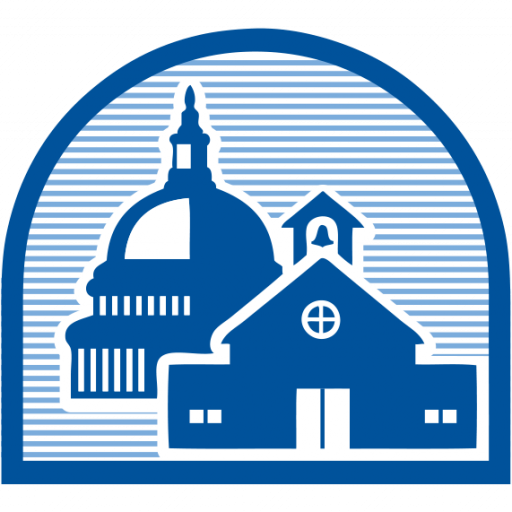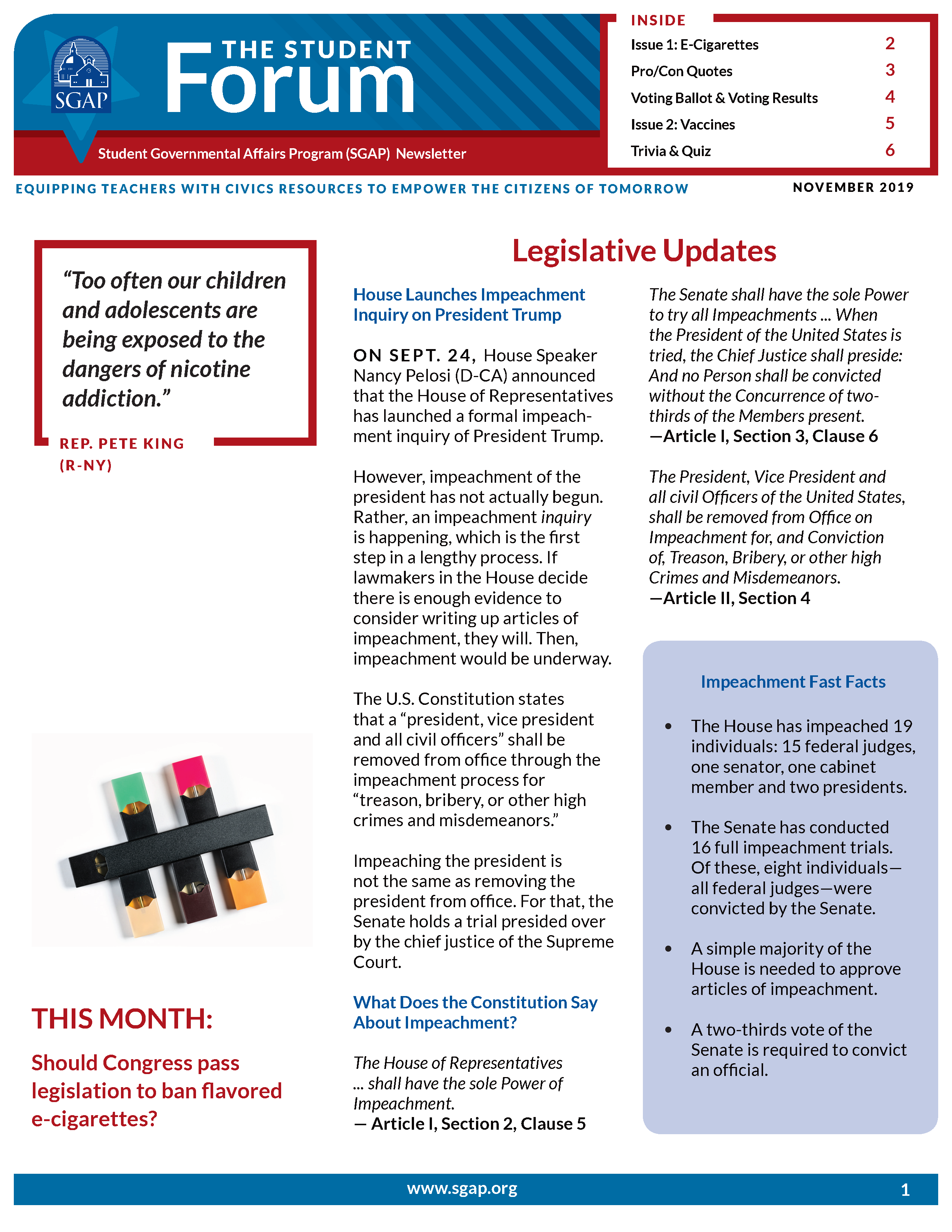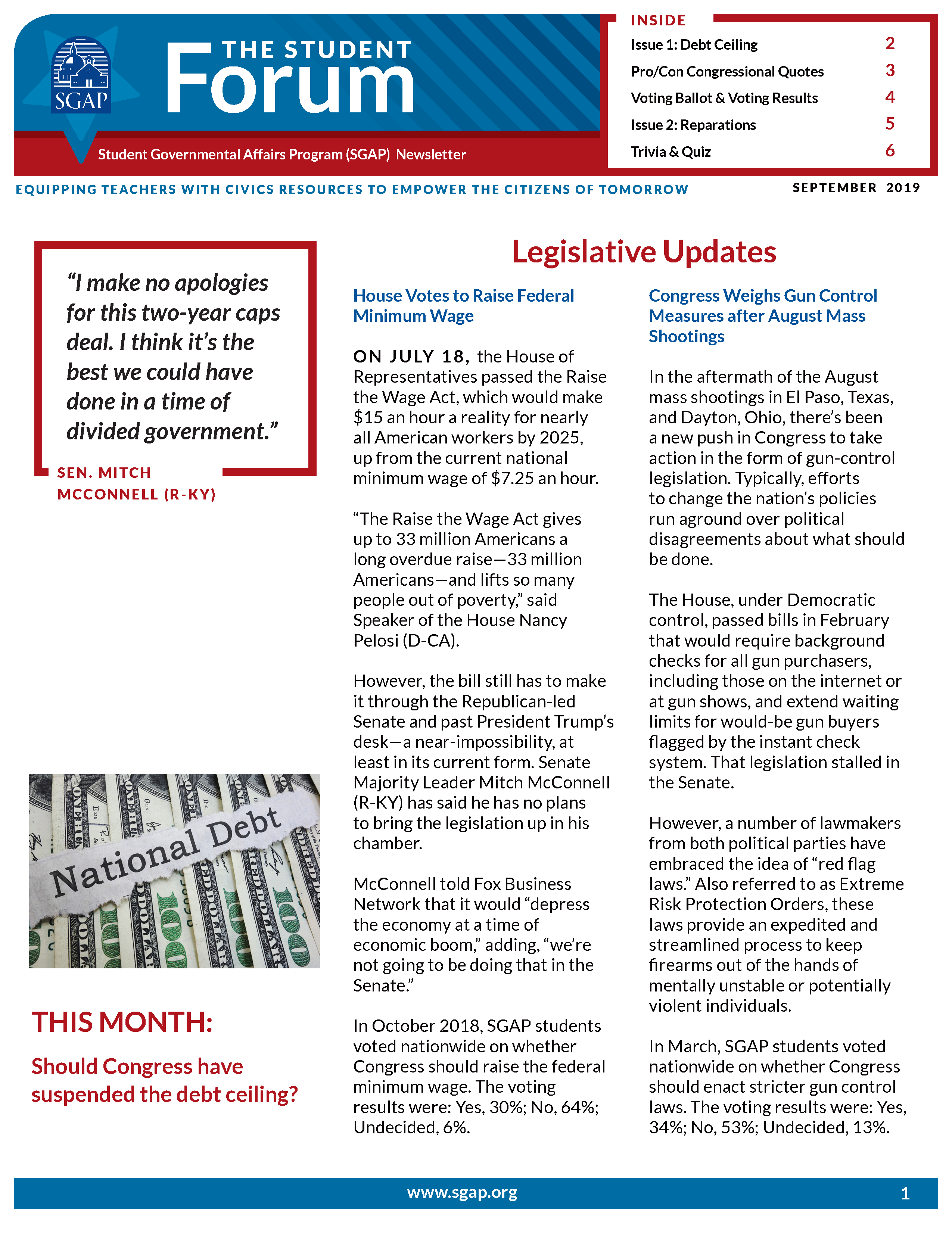RESEARCH LINKS
Issue 1: E-Cigarettes
CDC: “Outbreak of Lung Injury Associated with E-Cigarette Use, or Vaping”
H.R.4425 “Quell Underage Inhaling of Toxic Substances Act of 2019” or QUITS Act
ProCon.org: “Is Vaping with E-Cigarettes Safe?”
The Hill: “Trump Takes Heat from Right Over Vaping Crackdown”
The Verge: “Everything You Need to Know About the Vaping Health Crisis”
FTC: “Federal Trade Commission Cigarette Report for 2017”
Issue 2: Vaccines
S.1619 VACCINES Act
ProCon.org: “State Vaccination Exemptions: Medical, Religious and Philosophical”
CDC: “Global Measles Outbreaks”
Medscape: “Close Call – US Can Still Officially Claim Measles Eliminated”
Reuters: “Alarming Upsurge in Measles Has Devastating Impact, WHO Warns”
Vaccines.gov: “Vaccine Safety”
CRITICAL-THINKING QUESTIONS
Issue 1: E-Cigarettes
- Read the text of H.R.4425 or the “Quell Underage Inhaling of Toxic Substances Act of 2019” (link above). Is this bill the right solution to the problem of underage vaping? What alternative solution(s) might you propose?
- Do you agree that banning flavored e-cigarettes is the right thing to do? Why or why not?
- Compare and contrast the pro and con arguments in ProCon.org’s “Is Vaping with E-Cigarettes Safe?” article (link above). Where do you stand on vaping and why?
- How important is the issue of underage vaping in the U.S.? Do you think this country is doing enough to address the problem? Why or why not?
- Some conservative groups are critical of President Trump’s plan to ban flavored e-cigarettes. They say this is an overreach that will violate free-market principles. Do you agree or disagree with this criticism? Why?
Issue 2: Vaccines
- Currently, mandatory vaccine laws are left to the states to decide. Should there be a national law for vaccines? Why or why not?
- Check ProCon.org’s “State Vaccination Exemptions” page (link above) to see which kind of vaccine exemptions are allowed in your state. Do you agree or disagree with your state’s exemptions? Why?
- Which is more important for the issue of vaccines—individual rights or collective rights? Why?
- What are the risks associated with vaccines and do those risks outweigh the benefits? Why or why not?
- If vaccines are not mandatory, will the public health be endangered? Why or why not?






